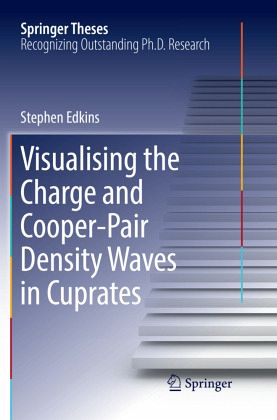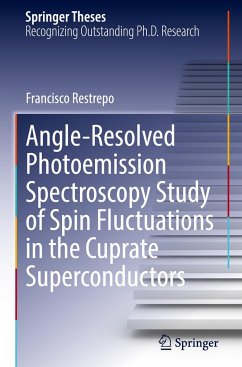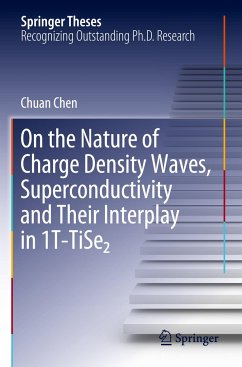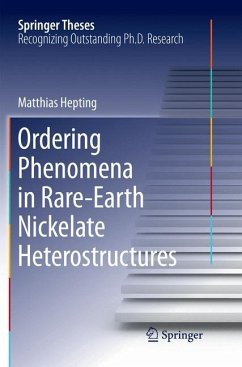
Visualising the Charge and Cooper-Pair Density Waves in Cuprates
Versandkostenfrei!
Versandfertig in 6-10 Tagen
76,99 €
inkl. MwSt.
Weitere Ausgaben:

PAYBACK Punkte
38 °P sammeln!
This thesis reports on the use of scanning tunnelling microscopy to elucidate the atomic-scale electronic structure of a charge density wave, revealing that it has a d-symmetry form factor, hitherto unobserved in nature. It then details the development of an entirely new class of scanned probe: the scanning Josephson tunnelling microscope. This scans the Josephson junction formed between a cuprate superconducting microscope tip and the surface of a cuprate sample, thereby imaging the superfluid density of the sample with nanometer resolution. This novel method is used to establish the existenc...
This thesis reports on the use of scanning tunnelling microscopy to elucidate the atomic-scale electronic structure of a charge density wave, revealing that it has a d-symmetry form factor, hitherto unobserved in nature. It then details the development of an entirely new class of scanned probe: the scanning Josephson tunnelling microscope. This scans the Josephson junction formed between a cuprate superconducting microscope tip and the surface of a cuprate sample, thereby imaging the superfluid density of the sample with nanometer resolution. This novel method is used to establish the existence of a spatially modulated superconducting condensate, something postulated theoretically over half a century ago but never previously observed.












